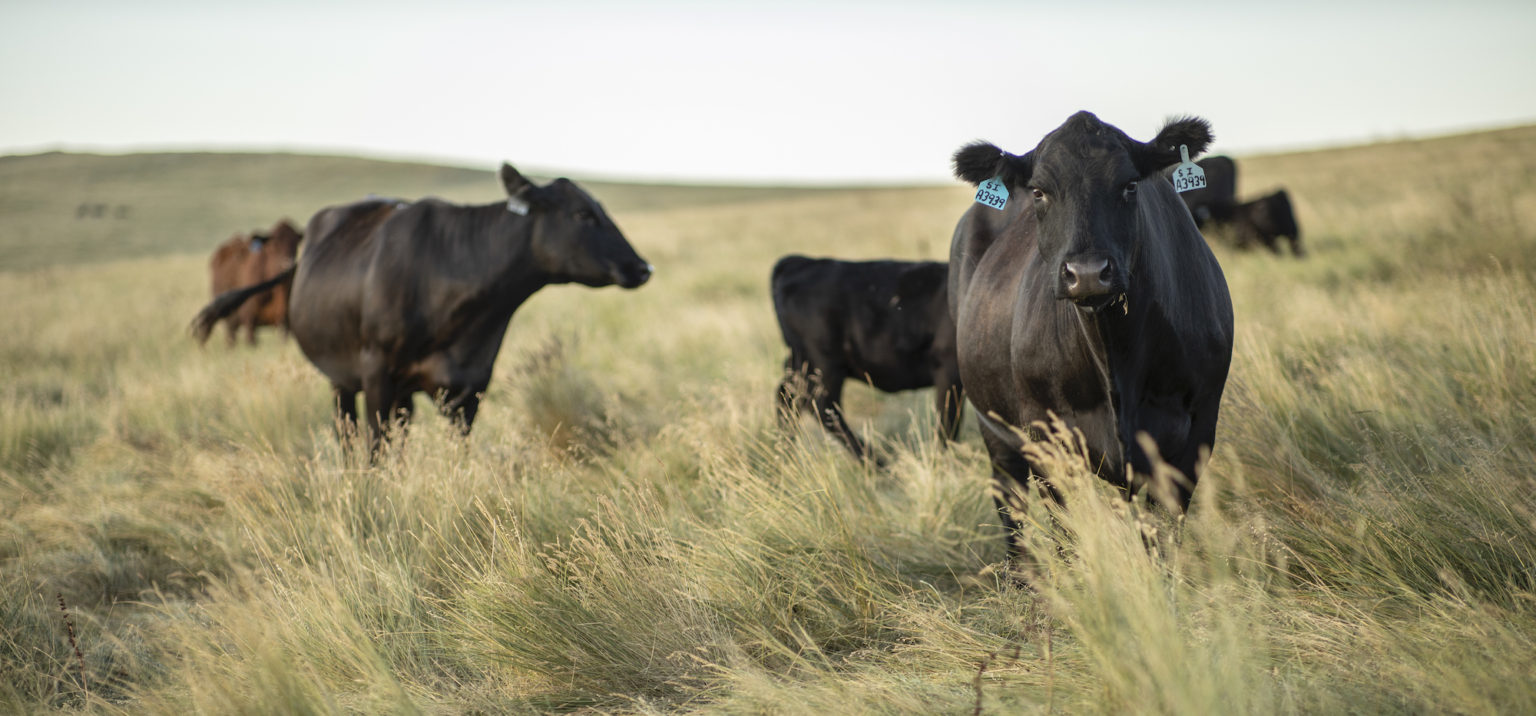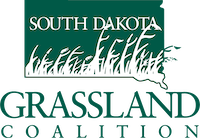About Us
Who We Are
The South Dakota Grassland Coalition began in 1997 as a response to a need for greater education regarding
conservation and management of grasslands. It is a producer-driven organization with an emphasis on management of private land.
The volunteers on the nine-member board are all landowners involved in production agriculture. They work with a number of other partners to bring up-to-date, science-based, production proven educational opportunities and information to grass managers and the general public in our state.
What's so great about grass?
Grassland makes up approximately 50% of all private and public lands in South Dakota. The cattle population in our state decreased by 180,000 in the first decade of this century. Disappearing along with the cattle were the pastures they grazed. According to a South Dakota State University study, South Dakota lost 1.8 million acres of grass from 2006 to 2012.
Healthy native prairie acts as an air filter for the planet. Photosynthesis, done by a very diverse mix of grasses, forbs and shrubs, stores carbon in the ground and releases oxygen into the atmosphere.
Native prairie is essential to the water cycle on the Great Plains. Rain water infiltrates native grazing lands more quickly than it does in any other land use option. The results are cleaner lakes and streams, replenished aquifers and better soil erosion control. The eastern half of South Dakota is in the Prairie Pothole Region. Although the Region contains only about one-tenth of the continent’s habitat area for breeding waterfowl, roughly half of the primary species of game ducks on the continent breeds there. Healthy grassland is essential for nesting habitat and water sources in this area.
Over 90 species of birds nest and live in grasslands. Nearly every species is declining in number because of habitat loss. The ring-necked pheasant is of special interest in South Dakota. The Department of Tourism estimates pheasant hunting generates $223 million in retail economic impact and an additional $111 million in salaries annually. Habitat provided by grasslands is essential for nesting and winter survival of this state icon.
The prairie is also home to numerous large animals such as deer, and antelope, coyotes, skunks, raccoons and badgers, each with a place in the ecosystem.
Pollinators such as bees and butterflies also depend on grassland. North Dakota and South Dakota lead the nation in honey production. The Monarch Butterfly population has decreased nearly 70% since 2000 because of changes in land use in the US and Mexico.
The loss of grasslands also take a human toll. As acres of croplands increase, the number of people living on the land decrease, negatively impacting our state’s small rural communities.

Our Vision
Aenean sollicitudin, lorem quis bibendum auctor, nisi elit consequat ipsum, nec sagittis sem nibh id elit. Duis sed odio sit amet nibh vulputate cursus a sit amet mauris. Morbi accumsan ipsum velit. Nam nec tellus a odio tincidunt auctor a ornare odio. Sed non mauris vitae erat consequat auctor eu in elit. Class aptent taciti sociosqu ad litora torquent per conubia nostra, per inceptos himenaeos. Mauris in erat justo.
Duis sed odio sit amet nibh vulputate cursus a sit amet mauris. Morbi accumsan ipsum velit. Nam nec tellus a odio tincidunt.
Our Mission
Sed odio sit amet nibh vulputate cursus a sit amet mauris. Morbi accumsan ipsum velit. Nam nec tellus a odio tincidunt auctor a ornare odio. Sed non mauris vitae erat consequat auctor eu in elit. Class aptent taciti sociosqu ad litora torquent per conubia nostra, per inceptos himenaeos. Mauris in erat justo.
Accumsan ipsum velit. Nam nec tellus a odio tincidunt auctor a ornare odio. Sed non mauris vitae erat consequat auctor eu in elit. Class aptent taciti sociosqu ad litora torquent per conubia nostra.
How does the SDGC work to improve grasslands?
Pasture walks and tours offer a practical look at how different producers manage resources. These are held in various locations in the state during the summer months.
A highly anticipated grazing school is held every September. Hands-on instruction in ranch management is delivered by experienced producers and range science professionals. The school includes both classroom and field sessions. Past topics have included extending the grazing season, plant identification, and increasing range land productivity with rotational grazing.
Birds: At Home, on the Range is an annual two-day bird watching event held in June. Over 90 species of birds call the prairie home. The Coalition recognizes that the presence of a diverse wildlife population is an indicator of healthy grasslands. This annual tour focuses on the integral relationship between habitat for birds and other wildlife and properly managed livestock and grassland.
Coalition members enjoy learning on a one-to-one basis via a mentor network. A list of producers willing to share successes and failures on various topics can be found here: Mentoring Network. Attending Coalition events also provides opportunity for informal mentoring.
Winter Road Shows held in various locations throughout the state offer producers a convenient opportunity to listen to and engage with well-known speakers on current topics. Jim Gerrish (management intensive grazing), Gabe Brown (soil health), Dave Pratt (economist), and Terry Gompert (holistic management) have been some of the past speakers.
A bi-monthly newsletter informs members about Coalition events and current grassland management topics.
Our Members
Our members are producers and individuals who are passionate about grassland management. “Out-of-the-box” is a term often heard when SDGC members gather. They value innovative thinking and are open to new ideas for managing range land, livestock and wildlife that are cost effective, yet protect or improve the resource. They learn from each other and together.
How can I help?
If your are interested in a big picture understanding of what grassland management does for the environment, practical education, improved forage production and profitability, you would benefit from joining us!
Association memberships are also available to non-producers interested in maintaining productive grasslands. Annual Membership fee is $35/year.
